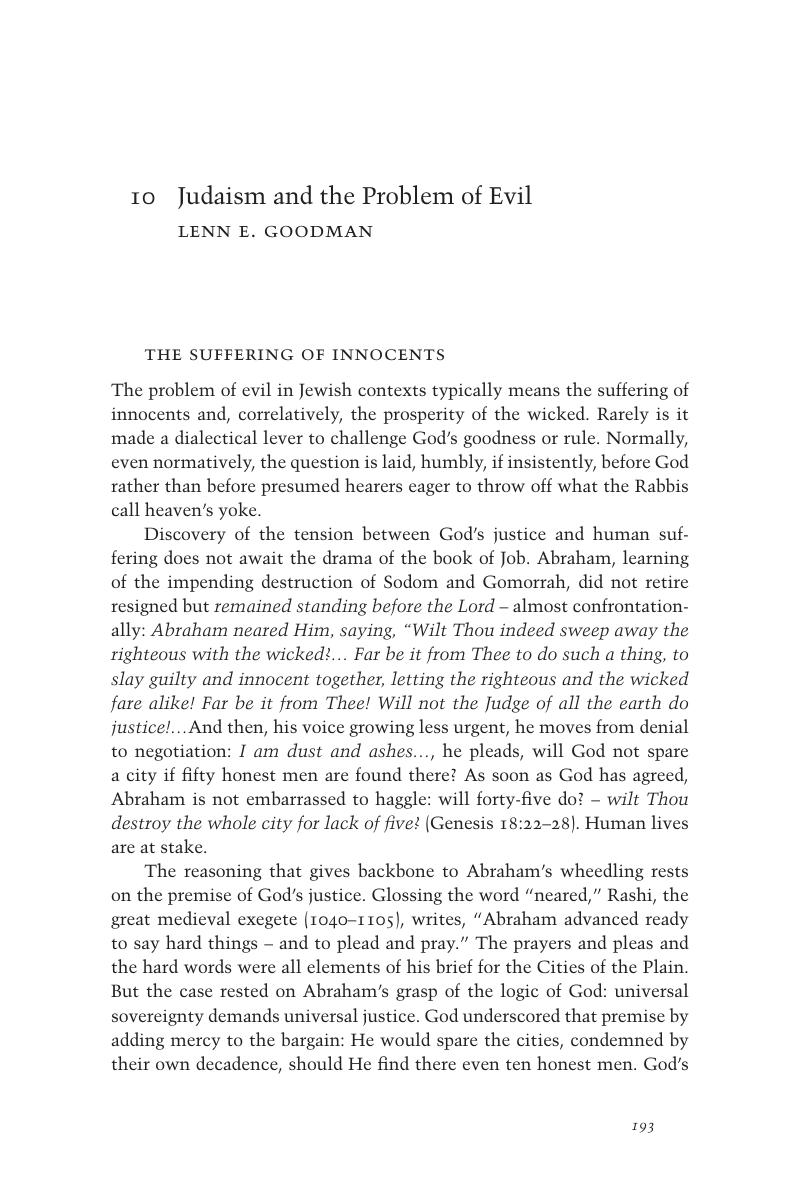Book contents
- The Cambridge Companion to The Problem of Evil
- Cambridge Companions to Religion
- The Cambridge Companion to The Problem of Evil
- Copyright page
- Contents
- Contributors
- Acknowledgments
- Introduction
- Part I Conceptual Issues and Controversies
- Part II Interdisciplinary Issues
- 8 Cosmic Evolution and Evil
- 9 Ancient Near Eastern Perspectives on Evil and Terror
- 10 Judaism and the Problem of Evil
- 11 Christianity, Atonement and Evil
- 12 Islam and the Problem of Evil
- 13 Naturalism, Evil, and God
- Index
- Miscellaneous Endmatter
- References
10 - Judaism and the Problem of Evil
from Part II - Interdisciplinary Issues
Published online by Cambridge University Press: 05 July 2017
- The Cambridge Companion to The Problem of Evil
- Cambridge Companions to Religion
- The Cambridge Companion to The Problem of Evil
- Copyright page
- Contents
- Contributors
- Acknowledgments
- Introduction
- Part I Conceptual Issues and Controversies
- Part II Interdisciplinary Issues
- 8 Cosmic Evolution and Evil
- 9 Ancient Near Eastern Perspectives on Evil and Terror
- 10 Judaism and the Problem of Evil
- 11 Christianity, Atonement and Evil
- 12 Islam and the Problem of Evil
- 13 Naturalism, Evil, and God
- Index
- Miscellaneous Endmatter
- References
Summary

- Type
- Chapter
- Information
- The Cambridge Companion to the Problem of Evil , pp. 193 - 209Publisher: Cambridge University PressPrint publication year: 2017
References
Further Reading
- 1
- Cited by

